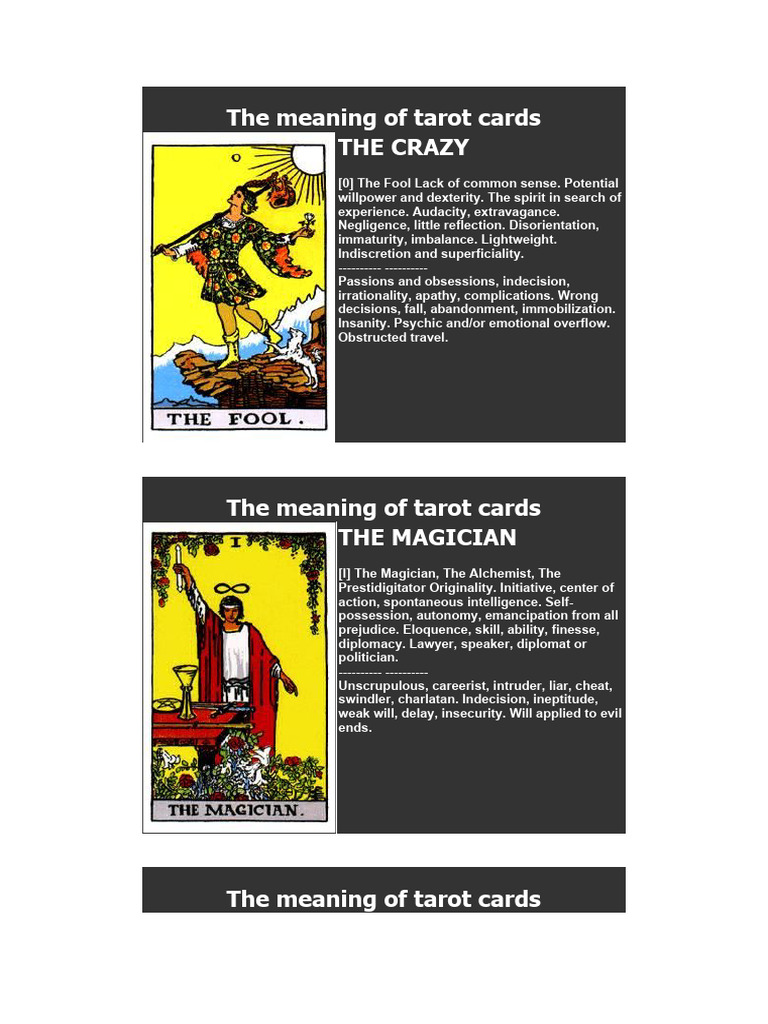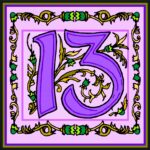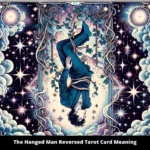The enigmatic realm of tarot cards is a fascinating aspect of divination, where each card serves as a portal to introspection, insight, and guidance. A deck of tarot cards, typically consisting of 78 cards, is divided into two primary sections: the Major Arcana and the Minor Arcana. Together, these components create a unique narrative tapestry that has captivated individuals seeking answers for centuries.
Understanding the layout of these cards and their intricate meanings is essential for anyone interested in unveiling the mysteries of tarot. Below, we explore the significance of a deck of tarot cards while elucidating what one can expect from each section of the deck and the varying ways they can be interpreted.
1. The Major Arcana: Archetypes of Human Experience
The Major Arcana consists of 22 cards, each one representing profound spiritual lessons and life-altering transformations. These are not merely cards but profound archetypes embodied within symbolic imagery. From The Fool, representing new beginnings and innocence, to The World, symbolizing completion and fulfillment, each card holds deep significance.
When interpreting the Major Arcana, readers often consider the following:
- Life Cycles: The Major Arcana cards often reflect the significant phases of life, addressing themes such as birth, love, loss, and rebirth.
- Introspection and Growth: These cards compel individuals to delve deeper into their psyche, urging them towards self-awareness and personal evolution.
- Universal Symbols: With imagery that transcends cultures, Major Arcana cards capture universal experiences—such as The Lovers, which not only signifies romantic connections but also choices and duality.
Due to their weighty connotations, Major Arcana cards are often drawn in pivotal readings, indicating a profound moment of clarity or change.
2. The Minor Arcana: The Tapestry of Daily Life
The Minor Arcana comprises 56 cards, divided into four suits: Cups, Pentacles, Swords, and Wands. Each suit represents different aspects of human experience:
- Cups: Associated with emotions and relationships, Cups often illuminate matters of the heart. For example, the Two of Cups can signify a notable partnership or emotional unity.
- Pentacles: Grounded in the material world, Pentacles reflect issues related to finances, career, and physical health. The Three of Pentacles highlights the importance of collaboration and teamwork in achieving goals.
- Swords: Governed by intellect and conflict, Swords tackle thoughts, challenges, and mental struggles. The Ace of Swords can symbolize clarity and the potential for new ideas or truths emerging.
- Wands: Representing passion and creativity, Wands indicate inspiration, ambition, and transformation. The Eight of Wands signifies swift movement and progress towards goals.
Through the Minor Arcana cards, readers gain insight into everyday situations and the ongoing experiences that permeate one’s life journey.
3. The Art of Spread: Layouts and Their Distinct Narratives
Tarot readings are conducted using various layouts or spreads, each serving a specific purpose and delivering unique insights. Below are common spreads used to facilitate clarity:
- The Three-Card Spread: This simple layout typically represents the past, present, and future, allowing individuals to reflect on their journey in chronological order.
- The Celtic Cross: A more complex spread, the Celtic Cross provides an in-depth analysis of the querent’s situation, examining influences, challenges, and potential outcomes.
- The Relationship Spread: This layout elucidates the dynamics between two parties, revealing strengths, weaknesses, and areas for growth.
Each spread manifests a distinct narrative, transforming the individual cards into a cohesive story that resonates with the querent’s situation.
4. Interpretation: Intuition Meets Knowledge
Interpreting tarot cards requires a seamless blend of intuition and learned knowledge. While each card has established meanings, the context of the question, the surrounding cards, and the tarot reader’s personal insights add layers to the interpretation.
Each tarot reading is unique, with the energy and intention set by both the reader and the querent guiding the exploration of the cards’ meanings. This subjective nature highlights the importance of trust in one’s instincts and the revelations that emerge from the cards. As the reading unfolds, themes often become evident, illuminating paths forward that may have previously remained obscured.
5. Tarot as a Tool for Empowerment
Many individuals gravitate towards tarot not solely for predictive purposes but as a means of personal empowerment and development. The insights gained from readings cultivate self-reflection, prompting questions that allow one to confront fears, recognize desires, and understand their motivations comprehensively.
Additionally, tarot can serve as a grounding tool during tumultuous times, offering reassurance and perspective. Engaging with tarot fosters a dialogue with the subconscious, allowing individuals to tap into their wisdom and discover paths they may not have considered before.
In conclusion, a deck of tarot cards serves as more than a mere collection of cards. It is a profound tool for self-discovery, empowerment, and insight into life’s intricacies. Whether one is a seasoned reader or a curious newcomer, the exploration of tarot cards invites endless journeys into the self, weaving narratives that resonate across time and space. Ultimately, the meanings embedded within these cards illuminate our paths, guiding us toward greater clarity and understanding in our lives.









Leave a Comment